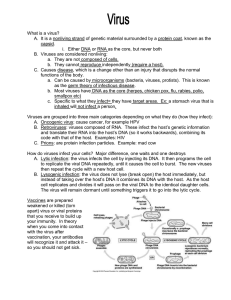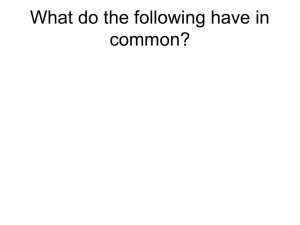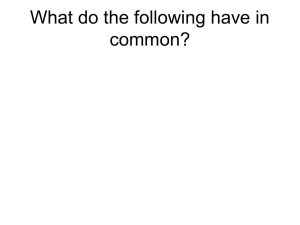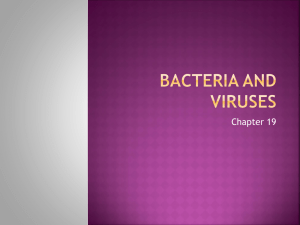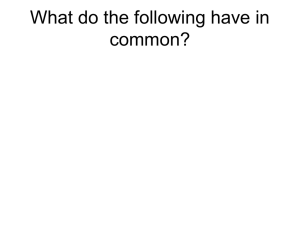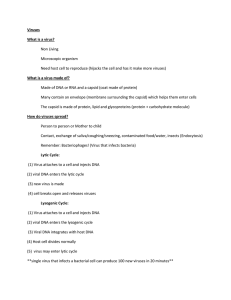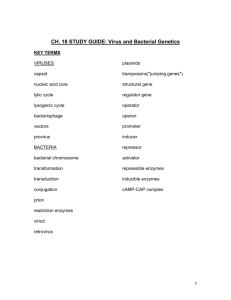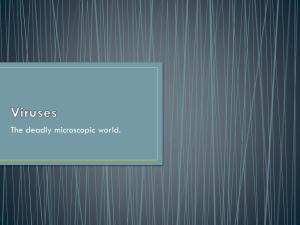Virus PP
advertisement
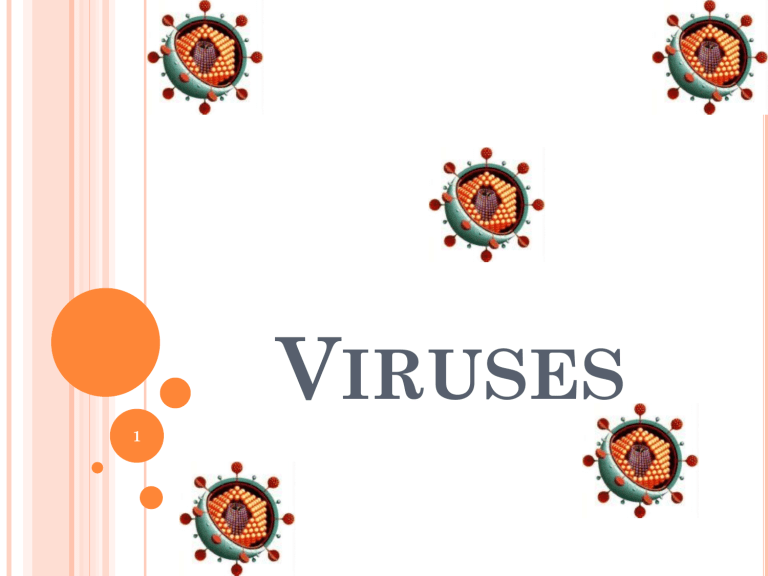
VIRUSES 1 BIOLOGICAL WARFARE 2 STILL NOT FEELING WELL Flu Rabies Chicken pox Mumps Common Cold 3 STILL NOT FEELING WELL 4 SEXUALLY TRANSMITTED DISEASES AIDS Hepatitis Herpes HPV 5 SEXUALLY TRANSMITTED DISEASES 6 STRUCTURE . 7 VIRUS A typical virus is composed of a core of DNA or RNA surrounded by a protein coat. The protein coat is called a capsid. Viruses are NOT alive. They are not living things! Receptor Site The receptor site is the location on the cell where the virus locks in. It is specific – a virus can only enter a cell if it matches exactly! Like pieces of a puzzle Viruses have two life cycles 1. Lytic Cycle: Viruses-immediately infect the host cell (FAST) Small Pox- Lytic Jenner developed first vaccine 1798 2. Lysogenic Cycle - lay dormant in the cell, viral DNA incorporated into host DNA, (SLOW) Herpes Simplex 1/Lysogenic Shingles-Lysogenic/ Chicken pox virus (herpes varicella-zoster) Viral Infections Lytic infection – a virus enters a cell, makes copies of itself and causes the cell to burst. -Cold, Flu Lysogenic infection – virus mixes its DNA with the DNA of the host cell and the virus replicates as long as the body keeps making new cells. -Herpes Retroviruses Contain RNA and not DNA - to be able to take over a host cell, the retrovirus must be able to convert the RNA into DNA - to accomplish the conversion, retroviruses insert an enzyme called Reverse Transcriptase into the host cell Treatment Vaccines are taken BEFORE a viral infection occurs. Your immune system: Recognizes the weakened virus (vaccine) Targets them for destruction Remembers the virus so that the next time it enters your cells it is automatically killed You never get sick!!! Unlike bacterial infections, viral infections cannot be treated once you are infected. Bacteriophage Bacteriophages are viruses that infect bacteria Characteristics of Viruses Not Alive - Must reproduce(replicate) inside a host Structure - Nucleic Acid – DNA or RNA - Protein coat – called a capsid - Envelope – some contain a layer of membrane taken from a host cell Mutate Rapidly Host Specific - can only infect one type of cell Small – from 20nm to 250nm - most are too small to be seen with a light microscope Vaccines used to prevent catching a virus


